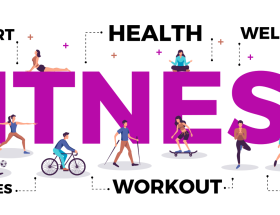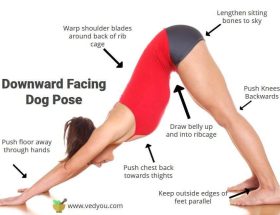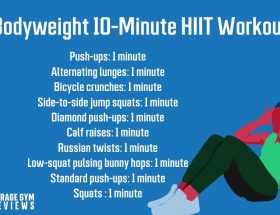When it comes to fitness, staying injury-free should be a top priority. One of the best ways to prevent injuries is by incorporating flexibility exercises into your workout routine. By improving your range of motion and mobility, you can reduce the risk of strains, sprains, and other common fitness-related injuries. In this article, we’ll explore some key flexibility exercises that can help you stay healthy and injury-free in your fitness journey.
The Importance of Flexibility in Fitness
Flexibility plays a crucial role in overall fitness and can significantly impact your performance in various exercises and activities. By increasing flexibility, you can improve your joint health, muscle function, and overall athletic performance. Additionally, flexibility exercises can help prevent muscle imbalances, reduce the risk of injury, and enhance recovery after intense workouts.
Key Flexibility Exercises for Injury Prevention
1. Dynamic Warm-Up
A dynamic warm-up is a series of movements that prepare your body for physical activity by increasing blood flow to the muscles and enhancing flexibility. Dynamic stretches involve moving your muscles and joints through a full range of motion in a controlled manner. Some examples of dynamic warm-up exercises include leg swings, arm circles, and walking lunges.
2. Hip Flexor Stretch
Tight hip flexors can lead to poor posture, lower back pain, and reduced range of motion in the hips. To improve hip flexor flexibility, try kneeling hip flexor stretches, lunges, or pigeon poses. Hold each stretch for 20-30 seconds and repeat on both sides to enhance flexibility and prevent injuries during lower body workouts.
3. Shoulder Mobility Exercises
Poor shoulder mobility can increase the risk of shoulder injuries, especially in exercises that involve overhead movements like shoulder presses or pull-ups. To improve shoulder flexibility, incorporate exercises like shoulder circles, band pull-aparts, and arm swings into your warm-up routine. These exercises can help increase shoulder joint mobility and prevent strain during upper body workouts.
4. Hamstring Stretch
Tight hamstrings can contribute to lower back pain, knee injuries, and reduced range of motion in the legs. To improve hamstring flexibility, try standing hamstring stretches, seated forward bends, or lying hamstring stretches. Hold each stretch for 20-30 seconds and repeat on both legs to prevent injuries during activities like running, squatting, or deadlifting.
5. Trunk Rotations
Trunk rotations can improve spinal mobility, reduce the risk of back injuries, and enhance core stability. To perform trunk rotations, stand with your feet hip-width apart and twist your upper body from side to side in a controlled manner. Focus on rotating from your waist and keeping your core engaged to prevent strain on your lower back and spine during exercises like twists or bends.
Incorporate Flexibility Exercises into Your Routine
Adding flexibility exercises to your fitness routine can help prevent injuries, improve performance, and enhance overall well-being. Whether you’re a beginner or an experienced athlete, incorporating dynamic warm-ups, stretching exercises, and mobility drills can significantly impact your fitness journey. Remember to listen to your body, start slowly, and gradually increase the intensity and duration of your flexibility exercises to maximize their benefits.
Stay proactive about injury prevention by prioritizing flexibility in your workouts and reaping the numerous benefits it offers. By incorporating these key flexibility exercises into your routine, you can maintain a healthy, injury-free body and enjoy long-term success in your fitness goals.
Remember, flexibility is not a one-time achievement but a continuous practice that requires dedication, consistency, and patience. Make flexibility exercises a regular part of your workout routine and experience the positive impact they can have on your overall fitness journey.
Flexibility is not just about touching your toes; it’s about empowering your body to move freely, efficiently, and safely in all physical activities. So, take the time to invest in your flexibility, prioritize injury prevention, and enjoy a healthier, more fulfilling fitness journey.







